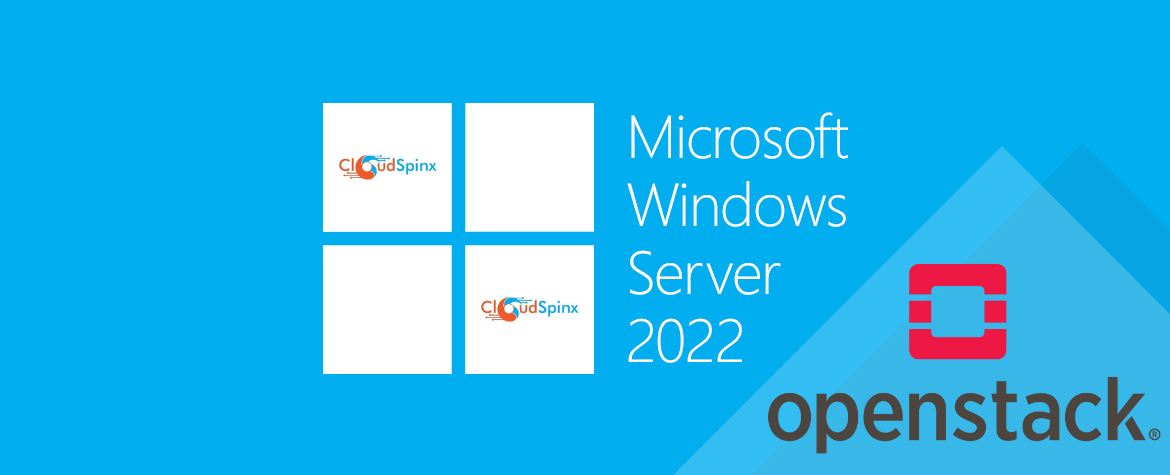Docker is a platform for building, deploying, and shipping containerized applications. A container packages an application with all its dependencies and configurations and is isolated from all other processes on the host machine. Containers are portable and can easily be shared and moved around. This way, developers can develop and deploy applications efficiently. Containers live in a container repository which acts as special storage for containers. They are accessed as either public or private repositories.
🚀 Ready to master Ubuntu? This content is an extract from The Ultimate Ubuntu Desktop Handbook. Discover the complete guide today.
Thus a container:
- Is a running instance of an image. It can be created, started, stopped, moved, deleted, etc.
- Can run on local machines, VMs, and in Cloud.
- Is portable and easy to use.
- Is isolated from other containers and runs its own software, binaries, and configurations.
Docker hub is a public repository that contains multiple applications images hosted in the repository. Docker makes the development process faster, easy, and more portable. So if you are a developer looking for a platform to build, share and run applications faster and easily, docker will do that for you.
Docker employs the idea of microservices. Microservices structures applications as a collection of multiple services that are highly maintainable, loosely coupled, and independently deployed. The key advantage of microservices architecture is that they enable fast, frequent, and reliable delivery of large, complex applications.
Docker Capabilities
As a developer, why would you choose Docker over other platforms?
- Build – There are hundreds of Docker images available for selection. This makes the build process very fast. in addition, you can build multiple containers using Docker Compose. Developers prefer Docker because it easily integrates with their favorite build tools e.g VS Code, CircleCI, and GitHub. Because of its portability, the developers can package their applications to run in any environment e.g on-premises, Kubernetes, AWS ECS, Azure ACI, Google GKE, etc.
- Share – Docker allows developers to collaborate with one another by publishing their images to Docker Hub.
- Run – Docker makes it possible to run multiple applications the same way across all environments. It also ensures that applications are deployed in separate containers independently using different languages. Docker Compose CLI speeds up and simplifies application development making the launching of the applications locally and on the cloud with AWS ECS and Azure ACI very fast.
Install Docker CE on Ubuntu 24.04 (Noble Numbat)
To install Docker on your system, the following requirements must be met.
- 64-bit version of Ubuntu 24.04.
- sudo account
- stable internet connection
- x86_64, arm64, s390x, armhf, and amd64 architectures.
Let’s now install Docker CE on Ubuntu.
Step 1: Update System
Update the APT index before installation.
sudo apt update && sudo apt -y full-upgrade
[ -f /var/run/reboot-required ] && sudo reboot -fOnce you have updated your system, Uninstall old versions of Docker from your system.
sudo apt remove docker docker-engine docker.io containerd runcStep 2: Install required dependencies
To successfully install Docker Engine on your host machine, certain basic dependencies need to be installed.
Run the command below to install the dependencies.
sudo apt update
sudo apt -y install apt-transport-https ca-certificates curl gnupg-agent software-properties-commonStep 3: Add Docker’s official GPG key
Import the Docker repository GPG key by running the following command.
sudo mkdir -p /etc/apt/keyrings
curl -fsSL https://download.docker.com/linux/ubuntu/gpg | sudo gpg --dearmor -o /etc/apt/keyrings/docker.gpgThe command above can also be run as below to use a trusted GPG key.
curl -fsSL https://download.docker.com/linux/ubuntu/gpg | sudo gpg --dearmor -o /etc/apt/trusted.gpg.d/docker-archive-keyring.gpgStep 4: Setup Docker repository
Once the GPG Key has been imported into your Ubuntu system, you now need to set up the Docker CE repository. Run the command below.
echo \
"deb [arch=$(dpkg --print-architecture) signed-by=/etc/apt/keyrings/docker.gpg] https://download.docker.com/linux/ubuntu \
$(lsb_release -cs) stable" | sudo tee /etc/apt/sources.list.d/docker.list > /dev/nullStep 5: Install Docker Engine
It’s all systems go. At this point, the environment is ready to install Docker CE on Ubuntu. Execute the following command.
sudo apt update
sudo apt install docker-ce docker-ce-cli containerd.io -yThe command executes to install Docker Engine on your Ubuntu system. If you wish to install a specific version of Docker Engine, begin by listing all the available versions and then select your preferred version for installation. Run the command below:
apt-cache madison docker-ceTo install a specific version use the syntax below.
sudo apt install docker-ce=<VERSION_STRING> docker-ce-cli=<VERSION_STRING> containerd.io docker-compose-pluginTo check the Docker Version installed, run the command:
$ docker --version
Docker version x.y.z, build bc4487aTo see a list of Docker options and commands:
docker --helpStep 6: Add user account to docker group
It’s always advisable to run docker commands without root privileges. This can be achieved by adding the normal user to the docker group created by default during Docker Engine installation.
List all groups by :
$ cat /etc/group
## Sample output ##
jil:x:1000:
sambashare:x:135:jil
rdma:x:136:
docker:x:999:To add the system user to the docker group, run the following commands.
sudo usermod -aG docker $USER
newgrp dockerStep 7: Running Docker services
To start using your Docker Engine, you need to start and enable the docker services to be available on every boot.
Start the service by the command:
sudo systemctl start dockerEnable Docker to run on the next boot.
sudo systemctl enable dockerCheck the Docker Engine status:
$ systemctl status docker
● docker.service - Docker Application Container Engine
Loaded: loaded (/lib/systemd/system/docker.service; enabled; vendor preset>
Active: active (running) since Sun 2024-10-02 19:27:59 EAT; 29min ago
TriggeredBy: ● docker.socket
Docs: https://docs.docker.com
Main PID: 35790 (dockerd)
Tasks: 13
Memory: 23.0M
CPU: 399ms
CGroup: /system.slice/docker.service
└─35790 /usr/bin/dockerd -H fd:// --containerd=/run/containerd/con>
Okt 30 19:27:58 ubuntu-22-lab dockerd[35790]: time="2023-10-02T19:27:58.8863797>
Okt 30 19:27:58 ubuntu-22-lab dockerd[35790]: time="2023-10-02T19:27:58.8864881>
Okt 30 19:27:58 ubuntu-22-lab dockerd[35790]: time="2023-10-02T19:27:58.8865737>
Okt 30 19:27:58 ubuntu-22-lab dockerd[35790]: time="2023-10-02T19:27:58.9434742>
Okt 30 19:27:59 ubuntu-22-lab dockerd[35790]: time="2023-10-02T19:27:59.1257844>
Okt 30 19:27:59 ubuntu-22-lab dockerd[35790]: time="2023-10-02T19:27:59.2117554>
Okt 30 19:27:59 ubuntu-22-lab dockerd[35790]: time="2023-10-02T19:27:59.2328453>
Okt 30 19:27:59 ubuntu-22-lab dockerd[35790]: time="2023-10-02T19:27:59.2330105>
Okt 30 19:27:59 ubuntu-22-lab systemd[1]: Started Docker Application Container >
Okt 30 19:27:59 ubuntu-22-lab dockerd[35790]: time="2023-10-02T19:27:59.2586058>Step 8: Run a sample docker container
For demonstration purposes, I will spin the Nginx container image on Docker. Issue the command.
$ docker run --name testnginx -p 80:80 -d nginx
Unable to find image 'nginx:latest' locally
latest: Pulling from library/nginx
31b3f1ad4ce1: Pull complete
fd42b079d0f8: Pull complete
30585fbbebc6: Pull complete
18f4ffdd25f4: Pull complete
9dc932c8fba2: Pull complete
600c24b8ba39: Pull complete
Digest: sha256:0b970013351304af46f322da1263516b188318682b2ab1091862497591189ff1
Status: Downloaded newer image for nginx:latest
69d4bf6043924f13f60a361f42873cef4a9a55711a4e966c6e3ec8ee736dfd5atestnginx is the name of the created container based on the NGINX image.
- -d option: specifies that the container runs in detached mode.
- -p option: tells Docker to map the ports exposed in the container by the NGINX image (port 80 ) to the specified port on the Docker host. The first parameter specifies the port in the Docker host while the second parameter is mapped to the port exposed in the container.
To verify if the container was created and is running properly, run the command:
$ docker ps
CONTAINER ID IMAGE COMMAND CREATED STATUS PORTS NAMES
69d4bf604392 nginx "/docker-entrypoint.…" 7 minutes ago Up 7 minutes 0.0.0.0:80->80/tcp, :::80->80/tcp testnginxStep 9: Uninstall Docker Engine (reference only)
To uninstall Docker Engine, issue the command below.
sudo apt purge docker-ce docker-ce-cli containerd.ioThe command will completely purge all Docker Engine packages from the system.
To completely delete all images, containers, and volumes:
sudo rm -rf /var/lib/docker
sudo rm -rf /var/lib/containerdI hope the guide was an eye-opener and you have learned something new. Please visit Docker Engine Documentation for more insight.
Explore More with CloudSpinx
Looking to streamline your tech stack? At CloudSpinx, we deliver robust solutions tailored to your needs:









